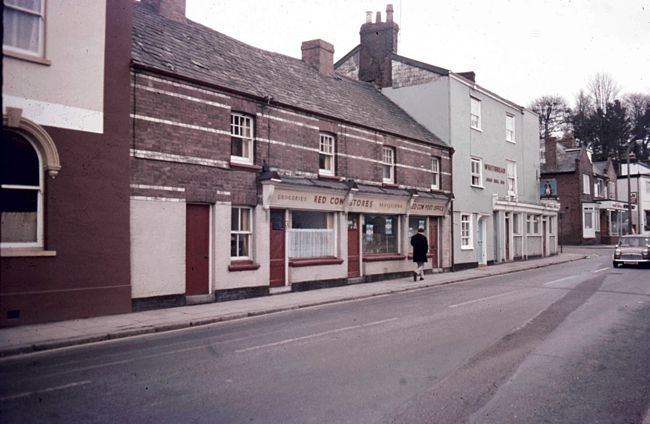
The Beer House Act 1830 and Exeter
During the 18th-century, the production and consumption of gin exploded, especially amongst the poor, causing violence and misery for many. Government attempts to prohibit the production of gin with the Gin Act of 1736 had little effect. Distilling changed from straight gin to "medicinal" spirits to circumvent the Act, and fanciful names such as Cuckold’s Comfort and My Lady’s Eye Water were used to describe the new drinks.
The introduction of the Beer House Act of 1830 tried a different approach to reducing gin consumption and hence, public drunkenness. Anyone, on payment of 2 guineas to a magistrate could obtain a license to open a beer house. Permission was only granted for six days a week, with Sundays excepted. Only beer and cider could be sold.
The result was a huge growth of beer houses and beer sellers, many from the front rooms of terrace houses and cottages. Another provision of the act was that existing taverns, inns and pubs could also brew their own beer on the premises. This had a knock effect, for there was a growth of demand for hops and barley for malting, thus bringing a new market for many farmers. Within eight years of the act being passed, 46,000 beer houses were opened, almost equalling the number of existing, pubs, taverns and inns.
The effect of the act on Exeter can be seen by looking at the history of the pubs in the city, through the various trade directories that were published during the 19th-century. The present Bowling Green was originally the Ropemakers Arms, because the family of ropemakers applied for a beer sellers license, running the two businesses side by side. The premises of the Artful Dodger were originally a beer house, becoming an established pub around about the turn of the 20th-century. There are many other examples of private premises being used for selling beer.
Listed below are some beerhouses and beer retailer from 1878 and 1897.
History, Gazetteer & Directory of Devon, 1878-79
William Hepper, beerhouse Countess Wear
Alfred Smith, beerhouse Alphington St
John Downing, practical brewer and beerhouse 59 Clifton Rd (recorded as the Crown and Anchor in 1897 and 1923)
Samuel Tozer, beerhouse Dunsford Rd
John Bearne, taylor and beerhouse Holloway St
John Broadmead, beerhouse North St
William Charles Soper, beerhouse 78 Sidwell St
Kelly's 1897
West William, beer retailer 78 Sidwell St
Beam John, tailor, 32,& beer retailer 33, Holloway St
Cawood Charles, beer retailer, 1 Paul St
Chenneour Edwin, beer retailer, 58 Longbrook St
Hill Susannah (Mrs.), beer retailer, 29 & 30 Black Boy Rd Ropemakers)
Searle James, beer retailer, Red Cow village, (became the John Bull/Artful Dodger)
Skinner Joseph, beer retailer, 17 Paris St
Sources: Kelly's and Whites Directories. © 2005 David Cornforth - not to be used without permission

Bowling Green

The Artful Dodger
│ Top of Page │
The Origin of Pub Signs
A way of indicating a place where wine could be purchased was established by the Romans, when their tabernae would display vine leaves to indicate they sold wine. In Britain, this was not very practical, because of a shortage of vine leaves, so the practice of hanging a small bush was followed. Pubs that are named The Bush may refer back to this practice.
When ale became popular, alehouses hung a long pole or ale stake outside, similar to the stakes that were used to stir the fermenting brew. By the 12th-century, inns, taverns and alehouses would be named. It was King Richard II who in 1393, passed an act making it compulsory for an alehouse to show a sign. This was so that official Ale Tasters would know where to call to test the product.
Now, most pubs have pub signs. Some are very elaborate, while some are real fakes, more a product of a marketing man's imagination than a long history.
Pub Signs
of Exeter
3.25 MB WMV - video

│ Top of Page │